
Ukraine’s 3rd Separate Assault Brigade: Force changing tide in war
The 3rd Assault Brigade, a standout unit within Ukraine's Armed Forces, is reshaping the war against Russia. From its origins to pivotal battles, here's a glimpse into what makes this brigade a formidable force
The 3rd Separate Assault Brigade is a unit within the Ukrainian Ground Forces formed on the first day of full-scale Russian invasion on February 24, 2022, as a Territorial Defense Forces volunteer unit. Veterans of the Azov SSO (Special Operations Forces) of the National Guard of Ukraine and former representatives of the Azov movement became its backbone.
Espreso tells about one of the most efficient brigades in the ranks of the Armed Forces of Ukraine, what makes it unique, its history, and the battles which changed and continue to change the course of the war against Russia.
Highlights of the article:
- The 3rd Brigade’s role in Avdiivka defense
- What makes the 3rd Separate Assault Brigade unique
- Full-scale invasion: Timeline of notable battles
- The origins: Azov and Russian myths
The 3rd Assault Brigade: A unique unit within the Armed Forces of Ukraine
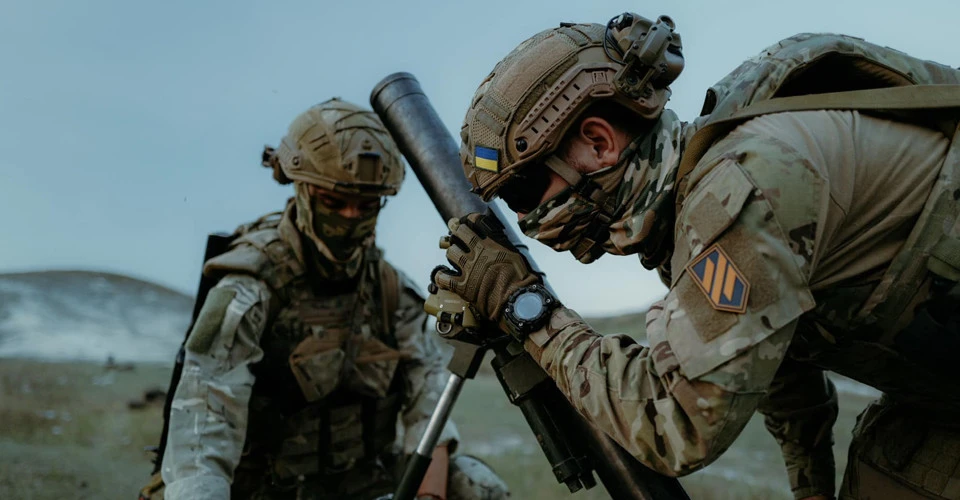
Throughout Russia’s full-fledged war against Ukraine, the 3rd Assault Brigade has demonstrated itself as a standout force within the Armed Forces of Ukraine, distinguished by its emphasis on technology, soldier training, and a strong sense of camaraderie.
Third Assault Brigade's role in Avdiivka defense
Urgently responding to a critical situation, the 3rd Separate Assault Brigade had been swiftly redeployed to the Avdiivka area to reinforce Ukrainian troops, facing a significant threat from seven Russian brigades.
The 3rd Separate Assault Brigade dealt significant blows to Russian troops, according to the brigade's official Telegram channel.
Quoting the brigade's report, it stated, "Despite facing a substantial artillery advantage, attack drones, and up to a hundred anti-aircraft missiles daily, we inflicted losses on the enemy: over 1,500 casualties, more than 3,500 wounded, and more than 20 armored vehicles destroyed."
Mykola Volokhov, the commander of the Terra unit in the 3rd Assault Brigade, shared insights with Radio Donbas Realii on the intense situation in Avdiivka.
Volokhov, also known as "Abdula," highlighted the gravity of the conflict, stating, "Difficult situation. The enemy is strong. The battles are intense, but we seem to be coping so far."
Volokhov mentioned a substantial enemy presence, estimating that "seven brigades [of the Russian army] are standing against us, constantly bringing in reinforcements and rotating."
Regarding Russian tactics, he emphasized, "They do not abandon their tactics and attempts to win with numbers. A very large number of equipment and infantry are being thrown at us. Attacks are very intense, they do not stop either day or night."
After an intense battle, the Ukrainian command decided to withdraw all forces from Avdiivka, but the Russians still keep pushing in the area and along the frontline.
So this is only a question of time where the brigade will be deployed next – whether it’s Vuhledar or Chasiv Yar, or somewhere else. In the most recent development, the brigade successfully ousted Russian forces from Krasnohorivka in the Donetsk region, following an invasion into the town's southeast. Therefore, the brigade, as well as the Armed Forces of Ukraine in general, is currently in great need of support and aid.
In a message to civilians, Volokhov urged belief in Ukraine's victory, emphasizing the need for support. Volokhov invited enlistment, which is also available for foreign citizens, stating, "Go to the 3rd Separate Assault Brigade recruiting center and join us here. We need help, we also need reinforcements."
For those unable to join, he requested support through donations, particularly underscoring the 3rd Assault Brigade's urgent need. Volokhov concluded, "Believe in our victory, support us. Let's end this war together. This is the only way we will be able to win, and only this way we will be able to win in some adequate terms."
3rd Assault Brigade: What makes it unique
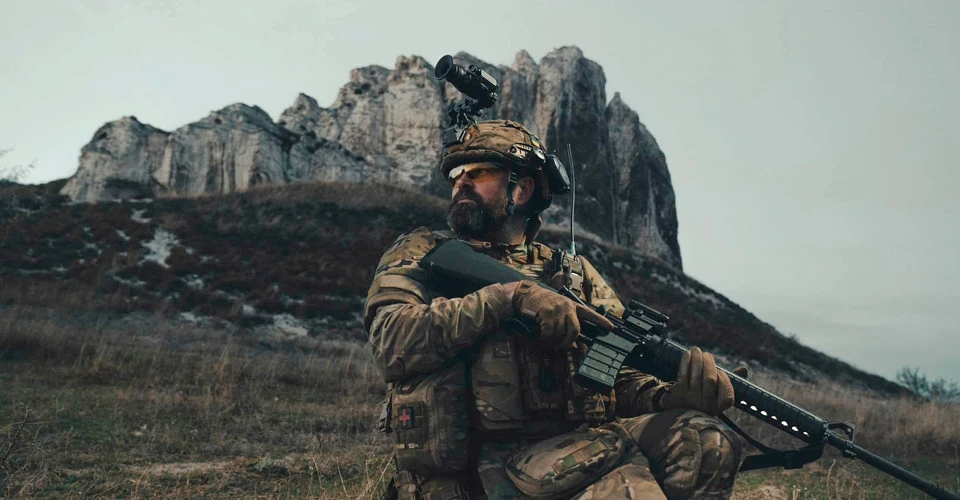
1. Focus on technology and communication
The brigade's strength lies in embracing the technological revolution in warfare, particularly in utilizing drones for intelligence and as effective ground forces, as stated by Oleksandr Borodin, the brigade’s spokesman.
"War is evolving with a technological revolution, and drones play a pivotal role. They're not just for intelligence; they've become crucial shock forces both in the air and on the ground," he explained.
"We don't just copy international models; we build our own, considering the uniqueness of our war," he emphasized, highlighting the importance of tailoring strategies to the specific challenges Ukraine faces.
Volodymyr Korotya, nicknamed “Povstanets” (“Rebel”), commander of the 1st rifle battalion within the brigade, shared with TSN.ua that he appreciates the unit's ideology and forward-thinking planning approach to warfare.
"We implement an innovative planning approach, studying NATO standards and utilizing advanced practices. We maintain subordination with senior leadership, while also fostering open communication," he notes.
Forbes Ukraine wrote an article delving into why the brigade is so popular among young men and attracts many more recruits compared to other units, with up to 4,500 applications monthly. It is noted that the brigade functions almost like a startup, heavily relying on marketing, media, and communication.
The initial attempts at creating engaging content fell flat, but then popular comedian Viktor Rozovy, a brigade member, started a YouTube military diary, addressing topics that resonated with the soldiers, resulting in a remarkable growth from 183,000 to one million subscribers between January 2023 and February 2024. Even despite YouTube restrictions, some combat videos still manage to attract 4-5 million views.
"They are communication maestros, understanding their target audience's values and cultivating enduring motivation," the article says.
However effective communication goes beyond a polished facade; it mirrors real processes within the organization. The success hinged on creating a cohesive unit, or "esprit de corps," where each member sees themselves as part of a collective whole. "If everyone roots for the team's success, from the individual to the brigade, you can trust that people at all levels will demonstrate initiative, creativity, and perseverance, even without explicit instructions."
2. Training excellence
Brigade’s effectiveness lies in rigorous training; a challenging 9-week course for aspiring members covers tactical and fire training, medicine, military tactics, and more. Notably, only 40% of participants passed the first course. The training regimen is intense, producing fighters with unmatched endurance and willpower.
Recruits focus on weapon handling, rules, and structure, followed by psychological training, equipment use, and live shooting on the field. The course covers areas like amphibious assault, indoor combat, and topography. The final week of the course includes exams, where candidates demonstrate their 56 days of training, concluding with a 28 km march.
The brigade places significant emphasis on the commitment to valuing human life and thorough training of its fighters. Candidates undergo a multi-layered training process, ensuring they are well-prepared before engaging in combat missions. Unlike quick deployments seen in some military units, the 3rd Brigade takes time to develop its fighters, with an emphasis on proficiency and skills acquisition.
The spokesman highlighted the significance of time invested in training, emphasizing that fighters don't immediately go into combat after joining. "To become an attack fighter, they first serve in classic infantry, holding positions. Only when ready do they transition to the specialized role," Borodin explained.
"We don't send an untrained fighter into battle. We aim for professional training and skills acquisition from veterans to ensure the fighter performs tasks effectively and preserves their life," explains Korotya.
The main focus is on recognizing each fighter's unique abilities and aligning them with specific roles. Whether a cook, signalman, or machine gunner, each member is encouraged to excel in their designated area, as Forbes’ article notes:
"What's the brigade’s ongoing message to potential recruits? To maximize your usefulness in the army, we consider your civilian experience. If you were a driver, you'll work as a driver, with tasks matching your expertise. The second message is ensuring fighters not only survive but thrive. We're committed to constant training and preparation. War isn't as daunting when you're well-prepared for it."
3. Unit cohesion and strong morale
The brigade's strength lies in horizontal development, allowing quick adaptations. Company commanders can propose changes, and the rapid response from volunteers enhances efficiency. This dynamic approach, stemming from individual responsibility and initiative, gives the brigade a strategic edge, as stated by Oleksandr Borodin, the brigade’s spokesman.
The brigade fosters a sense of family among its members, emphasizing the use of callsigns for security and personal identity, according to the deputy company commander of the brigade, a junior lieutenant with the call sign “Protsent” (“Percent”).
"Security is one reason for using call signs," he explains. "But it's more than that. A nickname is like a family name, something more significant than what's on a passport."
This practice, according to Volodymyr Korotya, fosters a sense of belonging, turning the brigade into a family.
"When a person feels part of the family, they behave differently in the team.” It's about shared values and rules everyone follows, creating a cohesive and disciplined unit, notes Korotya.
"Our unit functions like a tight-knit family," senior lieutenant Dmytro Doroshenko (call sign Bomba) told Forbes Ukraine. "I'm always here for communication, 24/7, ready to support all recruits."
"Why does general mobilization often fall short? The recruits don't grasp what lies ahead. Our approach is clear: we're here to train you to fight so that our enemies perish, not you. Regardless of the challenges you face, we've got your back. You're part of our pack."
Key battles since the start of the full-scale Russian invasion
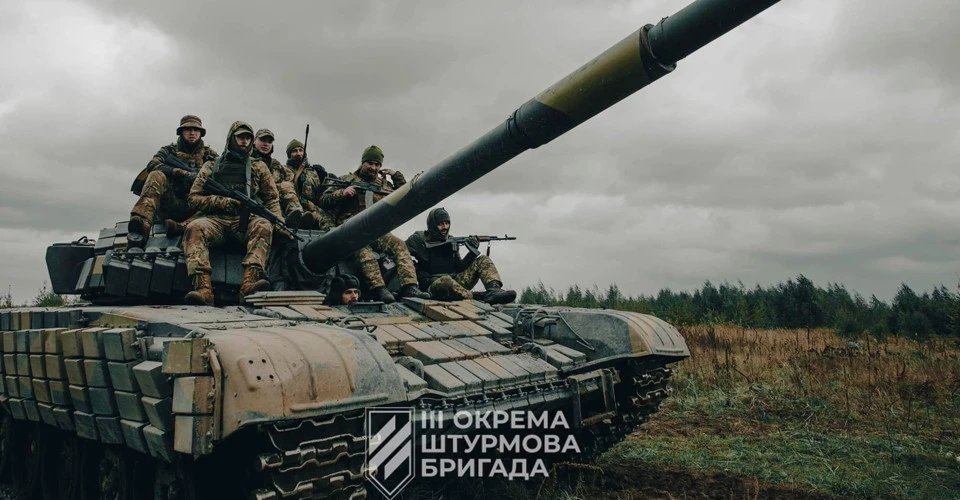
The brigade was designed to become an efficient, flexible, innovative, and disciplined force capable of engaging in both defensive and offensive operations, which is why they are being deployed in the most intense frontline areas. Let’s take a look at the brigade’s timeline and battle history.
1. Territorial Defense Azov
Initially, the unit played a crucial role in defending Kyiv. On March 9, 2022, it transformed into the "Azov" special purpose unit, contributing significantly to the liberation of strategic locations around the capital. Notable successes include liberating key locations like Vasylkiv, Bucha, Irpin, and Hostomel. In a significant ambush near Brovary, they defeated a substantial Russian column, causing massive losses and forcing a retreat.
“Last defenders of Mariupol”
With the start of the Russian invasion of Ukraine in 2022, most Azov units were based in Mariupol, soon to be besieged. In March 2022, Azov played a crucial role in defending Mariupol, a city pivotal for Russia's control of the Sea of Azov coast and a land bridge to Crimea.
The brave defenders of Mariupol eliminated at least 6,500 invading Russian troops, according to Petro Andryushchenko, an adviser to the city's mayor. They also vanquished around 80 tanks, and over 100 other armored vehicles, despite facing an enemy force many times their size.
The Russian group, totaling about 14,000 personnel, unleashed a vast array of equipment, including aircraft, ships, artillery, MLRS, and an abundance of rockets targeting Ukrainians. Throughout the siege, Russia deployed its most formidable units in the attempt to capture the city, including the 150th Division, 68th Tank Regiment, 83rd Airborne Brigade, 346th and 22nd Special Forces Brigades, 9th Marine Regiment of the so-called DPR, Black Sea Fleet's 810th and other brigades, the 155th Pacific Brigade, strategic and tactical aviation, Wagner forces, and mercenaries from the Caucasus.
Azov's fighters, serving as the face of Ukrainian resistance, documented the battle, especially within Mariupol's Azovstal. As Russia advanced, Azov concentrated in the Azovstal iron and steel works, a significant metallurgical plant in Europe, standing resilient alongside other Ukrainian troops.
Of the 86 days of the Battle of Mariupol, 82 were spent under complete siege. Collaborating with Azov fighters were the 12th Brigade of the National Guard, the 36th Separate Brigade of Marines, border guards, police, volunteers, and territorial defense units.
In the eyes of many Ukrainians, Azov symbolized the nation's unwavering determination against Russia. Their heroism prevented Russian advances on Odesa, Zaporizhzhia, Mykolaiv, and the encirclement of Ukrainian forces in Donbas.
The Ukrainian military initiated an evacuation from Azovstal on May 16. President Volodymyr Zelenskyy had reported that over 2,500 Ukrainian servicemen had been captured in Mariupol.
A significant exchange of prisoners occurred on June 29, 2022, releasing 95 defenders, including 43 Azov defenders, many with severe injuries.
After the capture of the Azov soldiers in Mariupol, several Russian officials said they should face trial and even execution. Several MPs in Russia’s State Duma also said they would propose new laws that could derail prisoner exchanges of fighters who Moscow claims are “terrorists,” so swapping Azov soldiers is an extremely difficult task, the Guardian wrote.
On July 28-29, 2022, a tragic event followed – the mass killing of captured Ukrainian POWs at the Olenivka prison by Russian occupation forces in Molodizhne village. The victims, defenders of Azovstal in Mariupol, faced explosions in the former Volnovakha correctional colony No. 120, resulting in 53 confirmed deaths and over 130 injuries. The atrocity followed the capture of Mariupol's Azovstal plant, with Russians initially claiming tribunal preparations and later leading to a devastating terrorist act.
A notable event occurred on July 8, 2023, when Azov commanders were returned home thanks to cooperation with Turkey. “Ukraine returned to their homeland the military – defenders of Azovstal: Commander of the Azov special operations unit of the National Guard, Hero of Ukraine Denys Prokopenko, his deputy Svyatoslav Palamar, acting Commander of the 36th Separate Marine Brigade Serhiy Volynsky, Senior Officer of the Azov unit Oleh Khomenko and Commander of the 12th Brigade of the National Guard Denys Shleha,” the President’s Office report said.
On January 31, 2023, another large-scale exchange of prisoners of war took place. 207 defenders returned home, but there were no Azov fighters among them, the media reported. As of the time of this report, over 900 Azov defenders are still in Russian captivity. We must not forget them; their story must be continually told.
2. SSO Azov
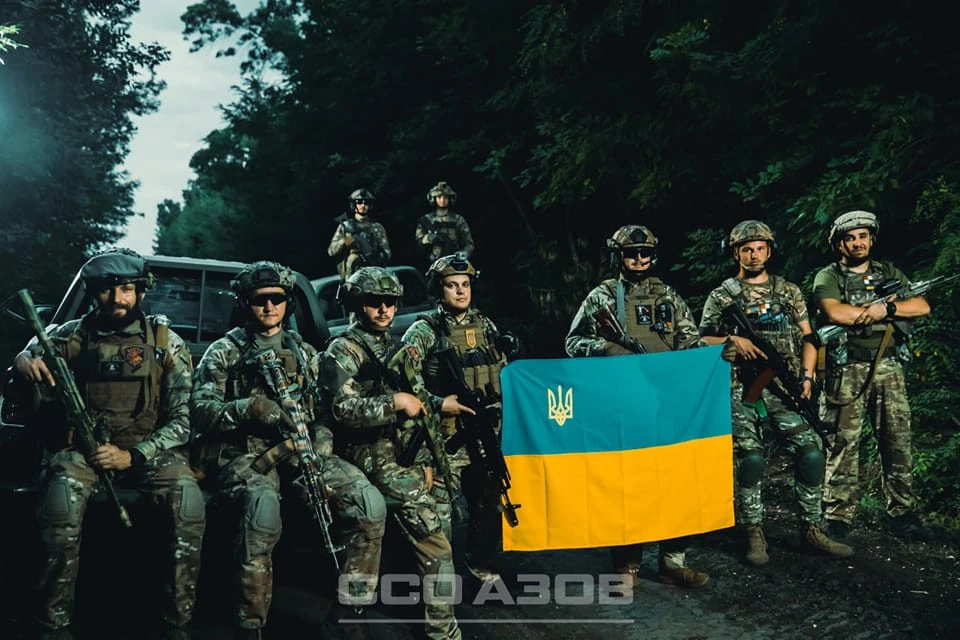
Outside of Mariupol, many veterans of Azov outside the city began forming new units, in particular in Kyiv, Sumy, and Kharkiv. These units were soon integrated into the Special Operations Forces (SSO) of the Armed Forces of Ukraine and became collectively known as Azov SSO.
SSO Azov resumed recruitment on April 21, 2022, employing a rigorous selection process. Deployed to the southeast, they showcased prowess by destroying enemy vehicles and capturing soldiers in the Zaporizhzhia direction.
The brigade's soldiers took part in the liberation of Kherson and the overall Kherson region, as well as in the Battle of Bakhmut.
In May 2023, it was one of the first to report successful offensives in the Bakhmut district against the Russian Ground Forces.
3. Third Separate Assault Brigade: Counteroffensive near Bakhmut
The regiment transitioned into the 3rd Separate Assault Brigade on January 26, 2023, earning a battle banner on February 24.
Recruiting commenced on April 12, and by May, they reported successful offensive actions in the Bakhmut district.
Since the start of 2023, the unit has been engaged in the Bakhmut direction. Specifically, on September 15, the brigade successfully liberated Andriivka in the Donetsk region and held onto it despite a Russian counterattack on September 17. Ukrainian Ground Forces commander General Syrskyi called Klishchiivka and Andriivka "important elements of the Russian Bakhmut-Horlivka defensive line."
After nearly a year of intense combat near Bakhmut, the 3rd Separate Assault Brigade withdrew from the challenging front lines for recovery in early December, emerging as Ukraine's most technologically advanced unit.
Through their operations in the Bakhmut direction, the brigade reclaimed over 20 square kilometers of territory.
Yet, in just three months, Avdiivka awaited them. In February 2024, shortly after the dismissal of Zaluzhnyi, the brigade was transferred to Avdiivka to prevent the encirclement of the city.
After the fall of Avdiivka on February 17, the brigade took new defensive lines west of Avdiivka around Lastochkyne.
Brigade’s origins and the extreme case of Russian propaganda
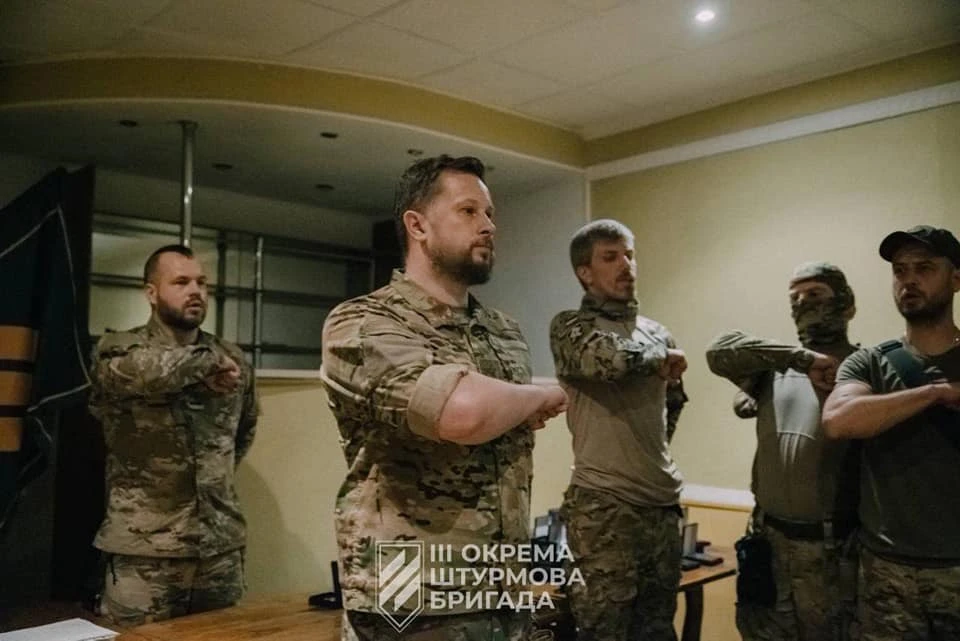
Originating from the Territorial Defense volunteer unit, established on February 24, 2022, and led by veterans of the Azov movement, the brigade officially became part of the Armed Forces of Ukraine on March 9, 2022. It later evolved into a distinct unit within the Azov Special Operations Forces (SSO/SOF) before becoming a brigade within the Ground Forces of the Armed Forces of Ukraine in January 2023.
So, what has become the 3rd Separate Assault Brigade was first a Territorial Defense unit led by veterans of the Azov movement – a movement that had a somewhat controversial history spanning from the start of the Russian-Ukrainian war in 2014. Let’s unpack this.
Back in April 2014, Russia invaded Ukraine and the commencement of the anti-terrorist operation (ATO) was declared. Acknowledging the suboptimal state of the regular Ukrainian army in 2014, volunteers stepped in as the nation's defense, forming battalions – Azov being one of them. By September 2014, their regiment expanded, and in November, they were integrated into the National Guard of Ukraine. Operating under the Ministry of Internal Affairs, Azov units actively engaged in military operations across the ATO territory.
Russian propaganda has branded Ukraine's Azov battalion as neo-Nazis since the very beginning, crafting narratives of brutality, uncontrollability, and xenophobia within their ranks – a storyline that naturally gained traction in Western media. Within the construction of the “Nazi Azov” image, admittedly, some real facts exist, but the majority are assumptions, manipulations, outright lies, and fakes (for further information on the topic, you can explore a detailed Detector Media explanation of why Azov had become a “neo-Nazi bogeyman” as an extreme case of nonsensical Russian propaganda).
Azov, with previous roots in far-right ideology in 2014 and with founder Andriy Biletskyi’s controversial views, has since transformed into a professional combat unit. It has been reformed, reshaped, de-ideologized, and faced a change of command as a full-fledged unit within the Armed Forces of Ukraine.
From 2014-2022, Azov had four commanders. Now, the 3rd Separate Assault Brigade is attracting recruits, including foreign citizens, for its effectiveness, not ideology.
As early as 2018, BBC Ukraine wrote an article about how the Azov movement members advocated for simplifying Ukrainian citizenship for foreigners who fought alongside Ukraine, many of whom were Russians. Individuals of various nationalities, including Greeks, Crimean Tatars, Jews, Moldavians, Georgians, Croats, Armenians, Albanians, Swedes, Belarusians, and also Russians, have served and continue to serve alongside what was first known as Azov, including the soldiers of different religions who speak different languages.
“Everything else is a personal matter. Any kind of harassment or restrictions are not tolerated,” Sviatoslav Palamar, deputy commander of Azov, said in the NV article.
In a statement to CNN, Azov said it "appreciates and respects Andriy Biletskyi as the regiment's founder and first commander, but we have nothing to do with his political activities and the National Corps party".
So, why do Russians latch onto them so much? The statement said that Azov's "motivation has always angered Russia. Therefore, disinformation attacks on the Azov Regiment have not stopped since 2014".
The intense training program, including tactical, medical, and psychological training, contributes to their battlefield success and serves as one of the explanations of why Russians made them a target for propaganda. Their fear of Azov stems largely from their endurance and professionalism as a unit.
Mariupol's defense especially played a pivotal role in reshaping global opinions about Azov fighters. In the face of Russian misinformation, the world has finally recognized the true nature of Azov – a professional, diverse, and resilient force defending its homeland.
Essentially born from sheer volunteer force, the 3rd Separate Assault Brigade is a testament to the indomitable spirit of Ukrainian volunteers defending their homeland. It is a highly mobile, well-equipped, and extensively trained force changing the course of the war.
- News












































